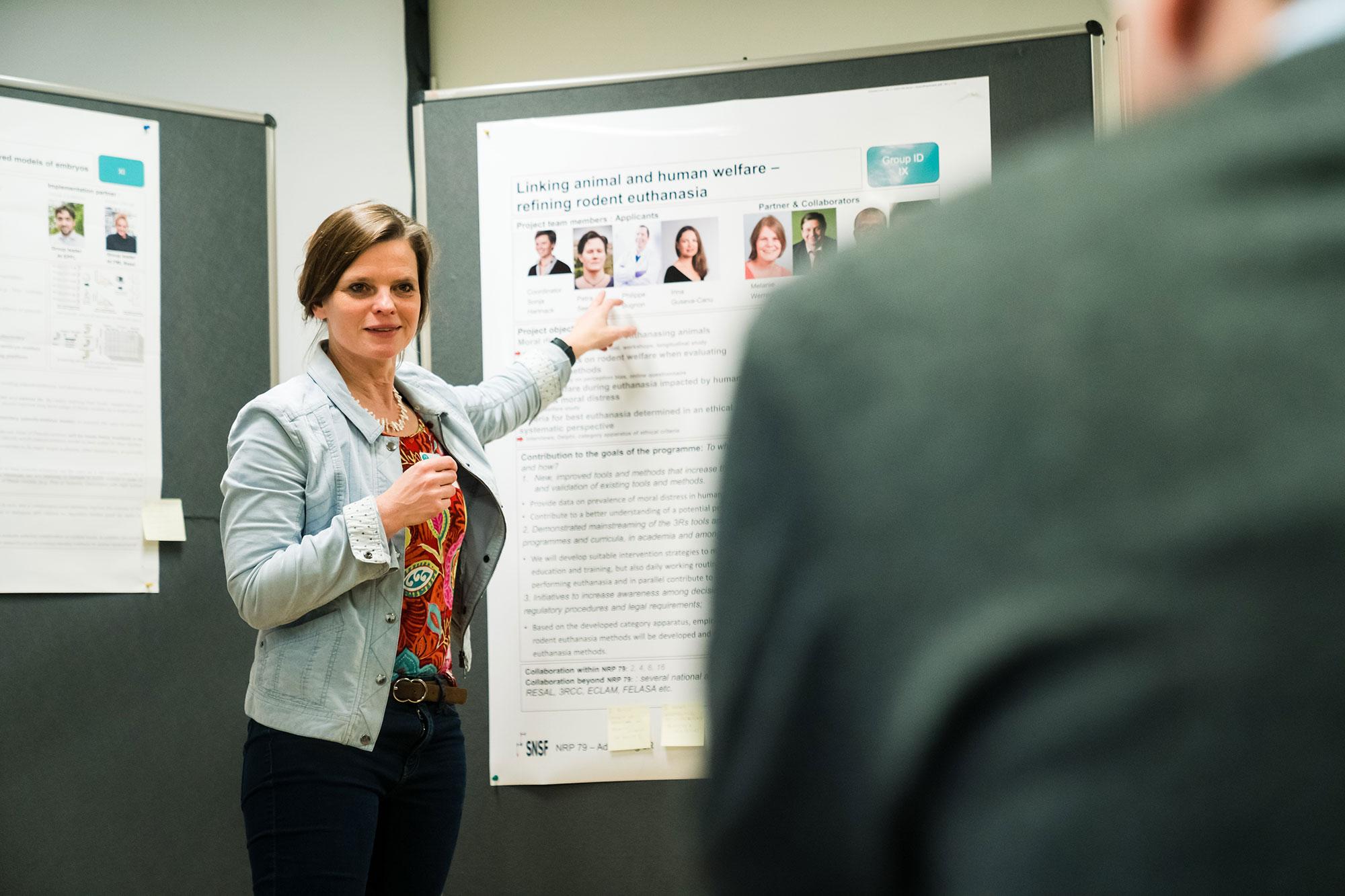(12) Improving the euthanisation of laboratory animals

"We want to develop ethically sound criteria for evaluating euthanasia methods that can be used to make decisions", Sonja Hartnack says.
Project description
Every year, several million rodents are killed (euthanised) in Switzerland at the end of animal experiments or as surplus animals, mostly using CO2. CO2 can be assumed to trigger feelings of pain, fear, anxiety and respiratory distress in the animals before they lose consciousness. However, euthanising animals also causes the laboratory staff stress.
Experts currently disagree on whether CO2 is the optimal method for euthanising animals or whether there are better alternatives. "It is difficult to evaluate the CO2 method because there is a lack of consistent study results and suitable evaluation criteria," Sonja Hartnack of the University of Zurich explains. In addition, there is evidence of biased perception of rodent behaviour, with behaviour being evaluated differently depending on the contextual information provided.
The question also arises as to how stressful animal euthanasia is for staff and the impact this has on animals. While burnout and post-traumatic stress have been topics of discussion for some time, moral stress has been hardly addressed at all. Nevertheless, studies have shown that having less control over euthanasia may diminish laboratory staff’s quality of life.
"We want to develop ethically sound criteria for evaluating euthanasia methods that can be used to make decisions", Hartnack says. The goal of this project is to improve rodents' welfare during euthanasia. The project also involves developing and implementing appropriate intervention strategies to improve the welfare of both laboratory animals and staff.
Interested in the progress of this project?
You can find information about the scientific publications, events, collaborations, etc. carried out since the beginning of the research project here.
Original title
Linking animal and human welfare - refining rodent euthanasia
